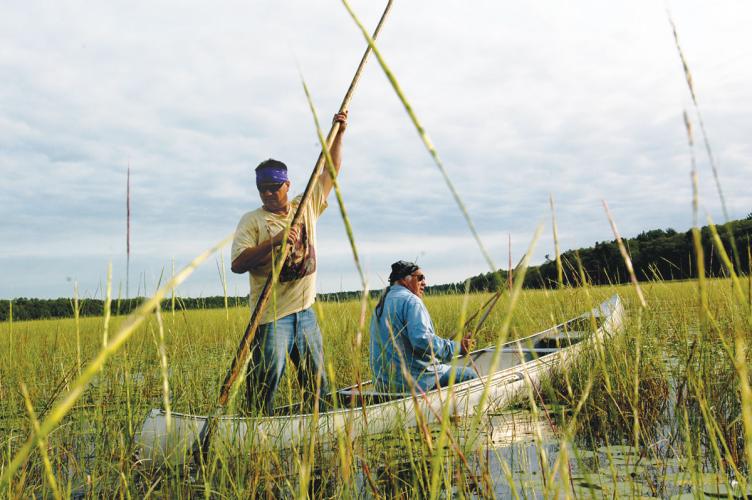I first heard about the Rights of Nature movement in 2008, when I heard the news that Ecuador became the first nation in the world to grant constitutional rights to Mother Nature. While many people understand the inherent common sense of granting nature rights to exist, flourish and evolve, this takes on a special meaning for Indigenous peoples, who steward up to 80 percent of the world’s remaining biodiversity.
As an Alaska Native, I wasn’t surprised that a country with a significant Indigenous population would champion this movement. Ten years later, as co-director of Bioneers’ Indigeneity Program, I began collaborating with a coalition of American Indian tribes working to bring the rights of nature into their legal systems.
Many legal scholars believe that the Rights of Nature movement was born with Christopher D. Stone’s 1972 Southern California Law Review article, “Should Trees Have Standing?” In it, he states just as lawsuits have treated corporations and other inanimate objects as “persons” with constitutional rights, nature too should be protected by the highest laws in the nation. Yet unlike U.S. environmental laws that are designed to award compensation to aggrieved property owners, rights of nature laws ensure that ecosystems are not only protected but, if needed, brought back to their natural complex, interdependent states. In essence, rights of nature are designed to ensure the environment’s ability to exist, evolve and thrive.
However, the core of Stone’s concept was not new. Indigenous cultures have always asserted that nature has such rights—and that humans have a responsibility to protect the environment and maintain it in a healthy state. In recent years, the Rights of Nature movement has steadily gained momentum, with laws supporting it being passed in Bolivia, Kenya, New Zealand and several other nations with significant Indigenous populations.
American Indian tribes are now propelling the movement forward in the United States. Already, the Ho-Chunk Nation in Wisconsin, the Ponca Tribe of Indians of Oklahoma, the White Earth Band of Ojibwe in Minnesota and the Yurok Tribe in northern California have adopted various resolutions to protect the rights of nature.
While such laws do incorporate ways to restore nature to a functional state, in truth, they are intended to make lawmakers, corporations and developers consider nature, said Ho-Chunk attorney Samantha Skenandore. “That’s what this movement is about,” she said. “to get in front of the problem as opposed to just constant triage.”
In the United States, dozens of citizen-led rights of nature laws have been passed, and yet no court has upheld any. The challenge to municipalities who have adopted such laws is that when a feature of nature such as a river or an ecosystem sues for damages, it must fight its way up the legal ladder, challenging the state first, before moving up the system to the Supreme Court. No case has made it this far.
As sovereign nations, tribes generally have the right to govern themselves. However, the U.S. federal government has minimized this sovereignty in a number of cases, and “states, local municipalities, towns and cities have even more restrictions in their local governance in some regard,” Skenandore said. “So they are typically not in the best position to create the rights of nature.”
This is why two tribally led cases in the courts today are so exciting. They have the potential for catapulting the Rights of Nature movement while reenforcing tribal sovereignty.
In 2018, the White Earth Band of Ojibwe adopted the rights of “manoomin” into its tribal law. This wild rice is an essential traditional food, culturally and economically, for tribal members. The law recognizes manoomin’s rights to “exist, flourish, regenerate and evolve” as well as to “restoration, recovery and preservation.”
In 2021, the White Earth Band Tribal Court filed a lawsuit, Manoomin vs. Minnesota Department of Natural Resources, stating the department circumvented notifying the tribe when it issued a permit to Enbridge that would allow the company to take 5 billion gallons of water from the local aquafer and pump it through its Line 3 oil pipeline. The tribe states that the pipeline’s proposed route through Minnesota’s waterways will siphon water out of sensitive ecosystems and potentially pollute them if there is an oil leak. These threats infringe upon manoomin’s rights to thrive across 389 acres and 17 different water bodies.
In response, the state of Minnesota filed a motion to dismiss the case based on a “false claim,” saying the lands affected are not within the tribe’s jurisdiction. When the motion was dismissed, the state sued the tribe’s judge in federal court, violating a treaty that guaranteed the Ojibwe inherent and sovereign rights to hunt, fish and gather, even in the territories that were ceded to the U.S. government.
This past January, the Sauk-Suiattle Tribe sued the city of Seattle, seeking legal recognition of the rights of “Tsuladxw” (salmon) to “exist, flourish . . . and regenerate” and asserting the tribe’s responsibility to protect salmon from the damages caused by the city’s dams on the Skagit River. Similar to the White Earth Case, the Sauk-Suiattle Indian Tribe vs. City of Seattle lawsuit is predicated on a treaty between the tribe and the United States that grants tribal members rights to fish, hunt, gather and travel on their ancestral territory.
For now, these cases seem to be playing out a football match of who ultimately has what control over jurisdictions on and off tribal lands. As of early March, the Eighth Circuit U.S. Court of Appeals had not yet issued a verdict in the White Earth Band’s case and the Sauk-Suiattle Tribe’s lawsuit has yet to be seen in court.
Yet these are just two of many more Indigenous-led cases to come to protect threatened ecosystems across the United States. If treaty rights based in the inherent sovereignty of American Indian tribes are not upheld by federal courts, these cases could expand to the International Courts of Justice. Legal dismissal of rights defined by treaties between the United States and tribal sovereign nations will weaken the sovereignty of nation states around the world, contributing to global trends to undermine democracy while making a statement that Indigenous peoples and the ancestral territories we protect do not matter.
“We have perpetual rights to enjoy and spiritual duty and responsibility to protect the gifts from the Creator,” said Frank Bibeau, citizen of the Minnesota Chippewa Tribe and the attorney representing White Earth Band’s case. “Our quality of life is directly dependent on and connected to the quality of lives of our relations—the water (“nibi”), wild rice (“manoomin”), fish, birds, four-legged animals and plants. We cannot live without them.”

